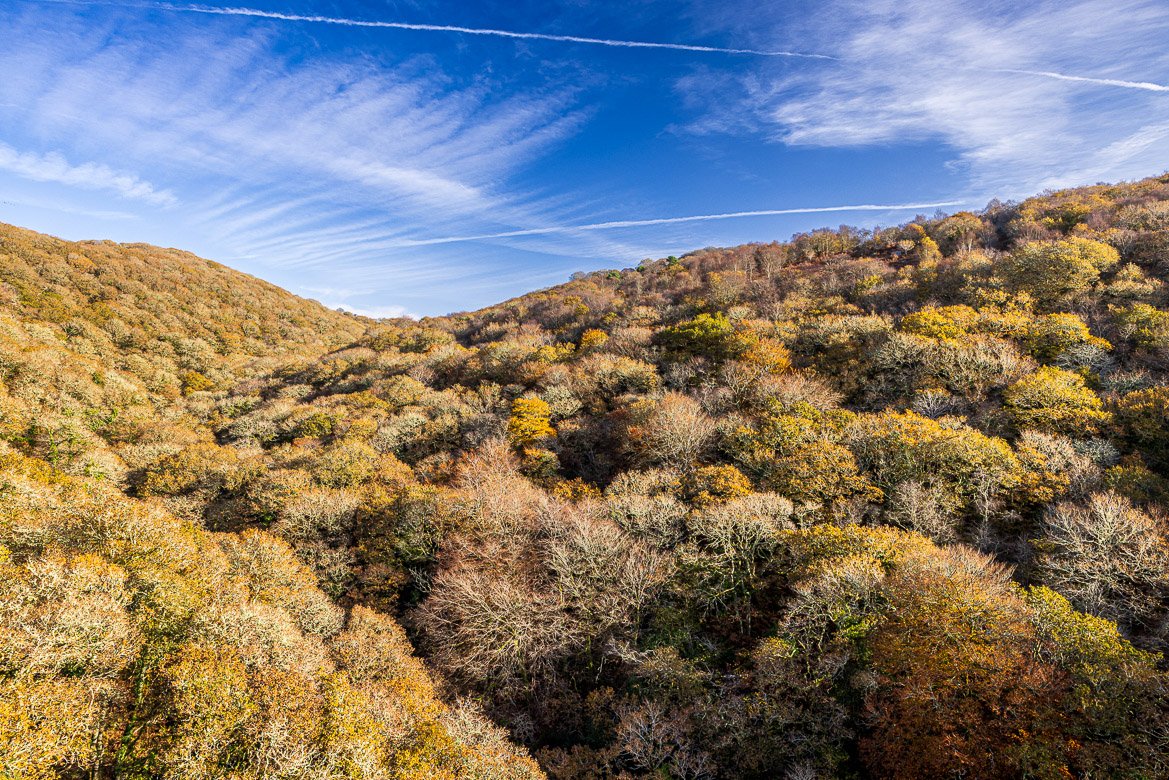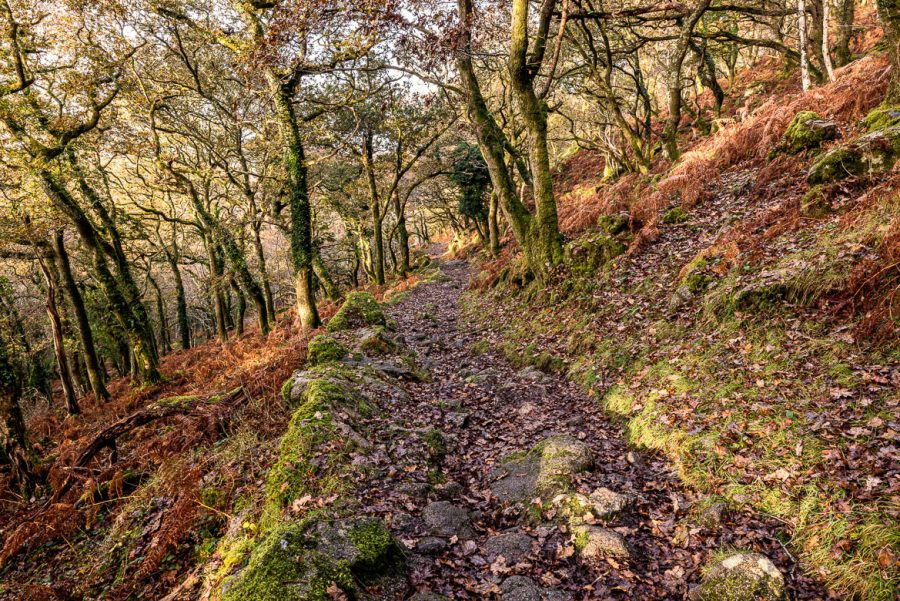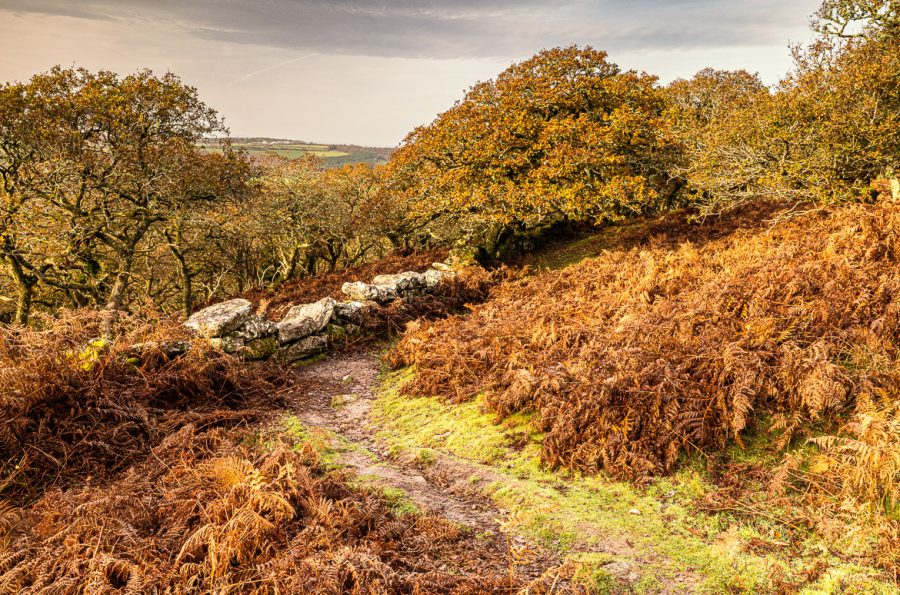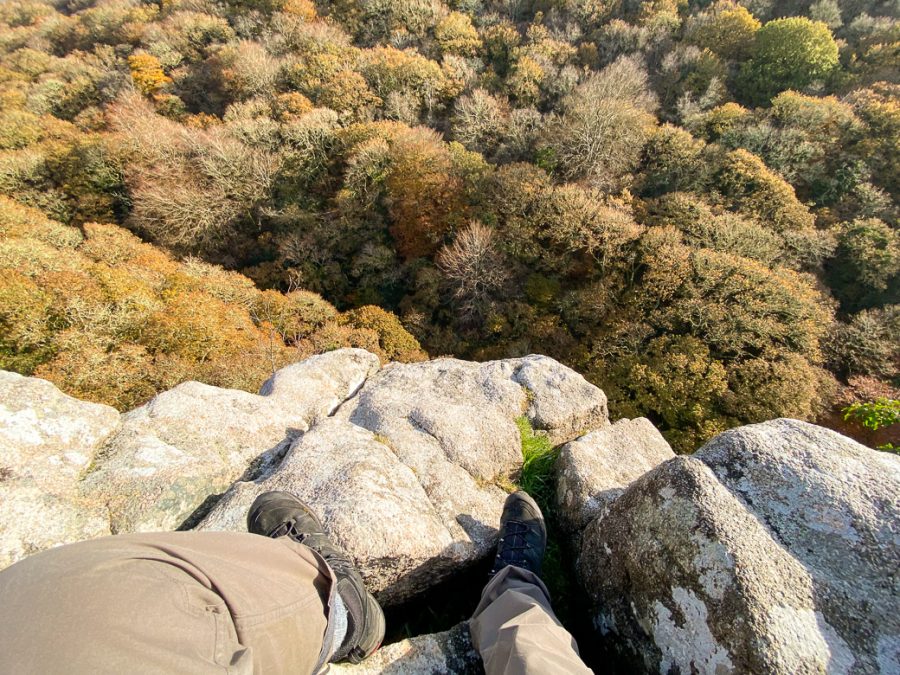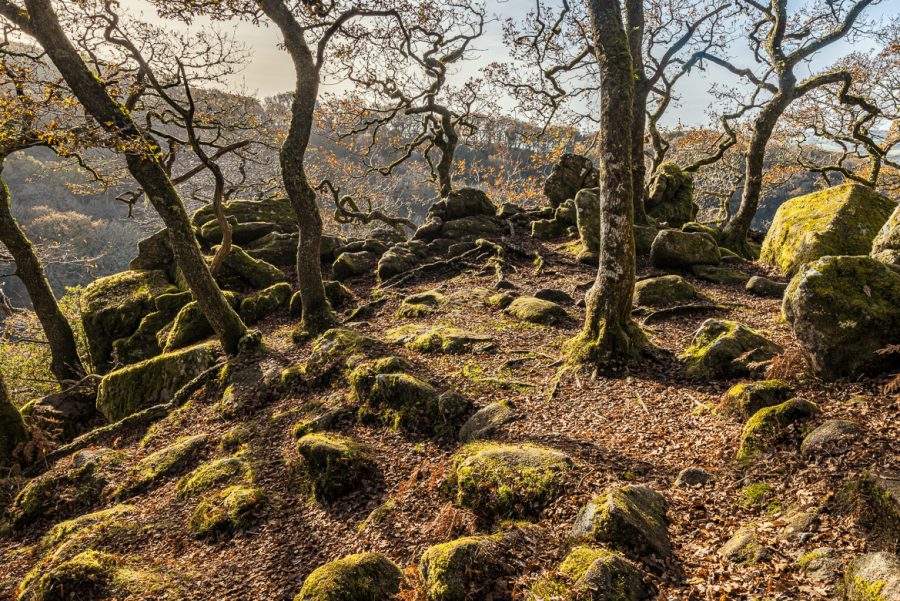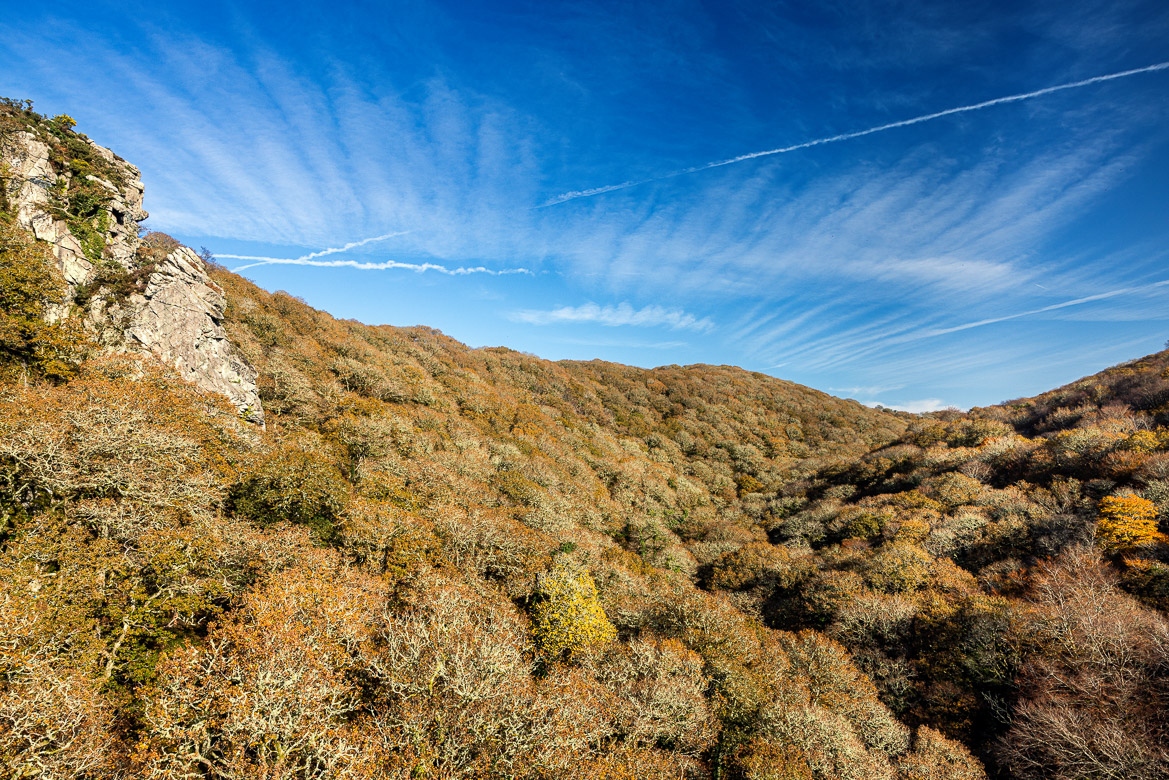
In my last post I described River Plym at Dewerstone Woods. “Dewerstone” is an ancient Celtic word for the Devil and he was according to tradition riding a gigantic black horse at night leading a pack of hounds chasing foolish humans over the Dewerstone granite outcrops to their deaths. Above the River Plym the moor is towering with open vistas and boggy moorland and approaching the river are steep rocks rising up from the river towards the moor above more than one hundred metres.
The rocks are popular with climbers and every time I have visited I have seen a few trying their luck. Happily, there are easier ways up for an older photographer with his backpack! The image above shows one of these rocky outcrops shooting up above the canopy of trees in the Plym valley.
Looking down from the path bringing me up towards to Dewerstone tor Looking towards the southwest as I approached the top of Dewerstone
My walk started with a gentle climb along a well paved path (paved with stones by miners in older times) (see the image above to the left), but changed after a while to a near vertical scramble up towards to top. Near the top I got my first view of the landscape beyond.
At the top I stood on the tor – I am not sure if this is named a tor or not, but it looked like a tor, felt like a tor and offered views like on a tor – and could look out over the landscape. To the southwest (image immediately below) I could see settlements and imagine the sea far away, but to the northwest (the second image below) it was only miles and miles of open moorland.
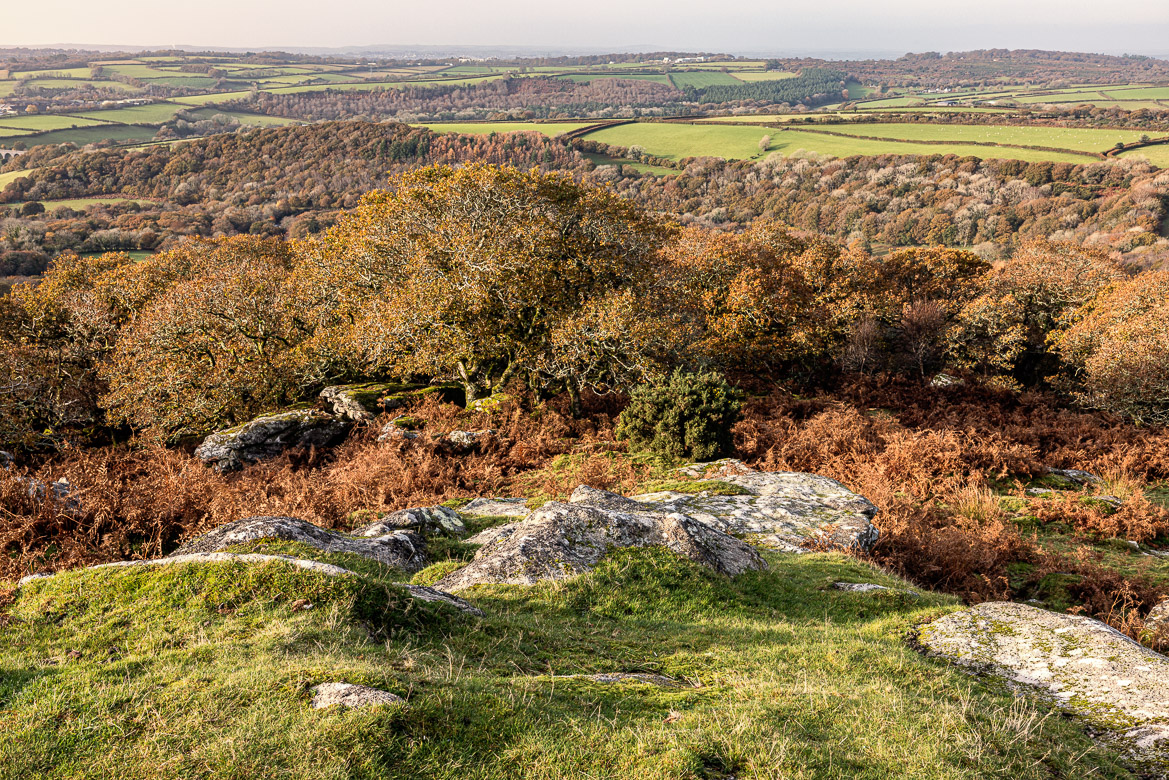
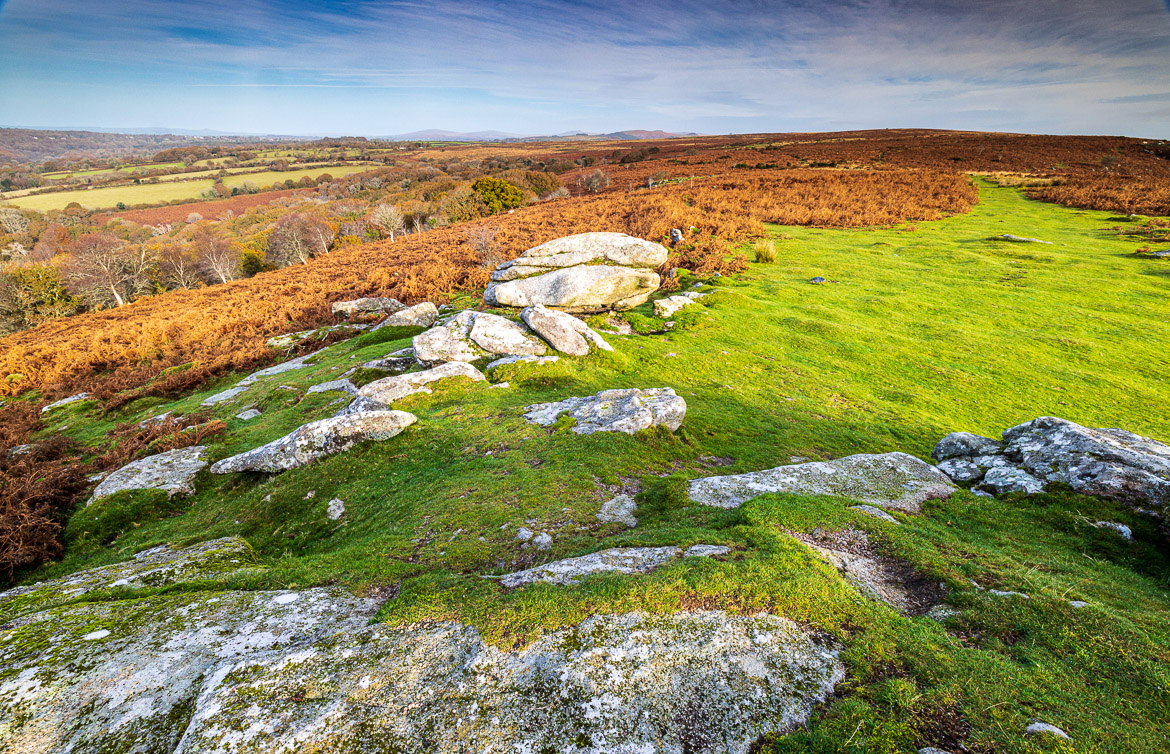
The best preserved Bronze Age Settlement on Dartmoor – and one of the best preserved in England – is Grimspound. Here at Dewerstone there was also a settlement. You could see parts of the original wall protecting the Settlement and remnants of a few Round Houses that people had lived in. The settlement, situated on a promontory, had a natural border and protection on parts of the area, due to the steep decline down to River Plym, and other parts were protected by a double wall with a 3 metre gap between the inner and outer wall. Not much of the original wall remains but some can be seen in the photo below.
The Dewerstone Settlement is believed to be older than Grimspound and was probably first settled in Neolithic times and definitely inhabited in early Bronze Age, whereas Grimspound is from late Bronze Age.
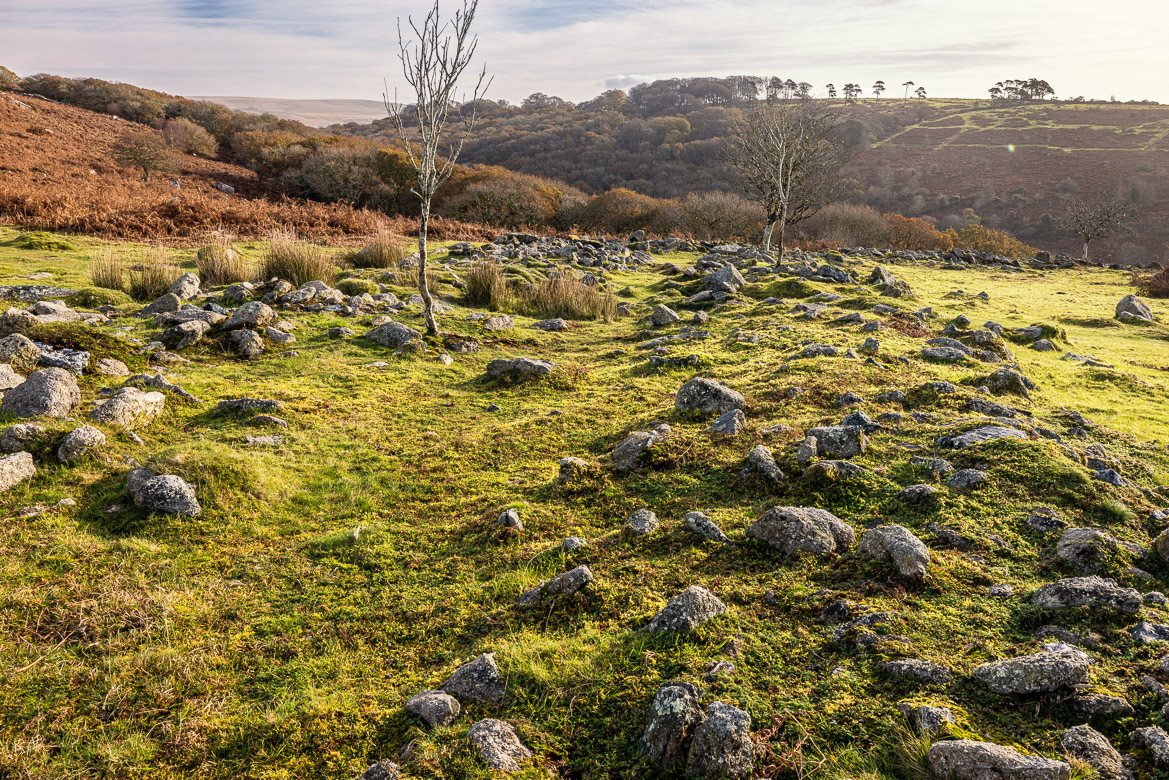
The stone wall ramparts protected part of the Dewertone settlement, but other parts had a natural protection and defence due the very steep promontory raising nearly vertically from the Plym valley more than a hundred metres below.. The image below shows the valley in autumn colours with one of several outcrops pictured the the left. That is one of the places, where the humans would fall to their deaths at night chased by the “Dewerstone” – the Devil – and his hounds!
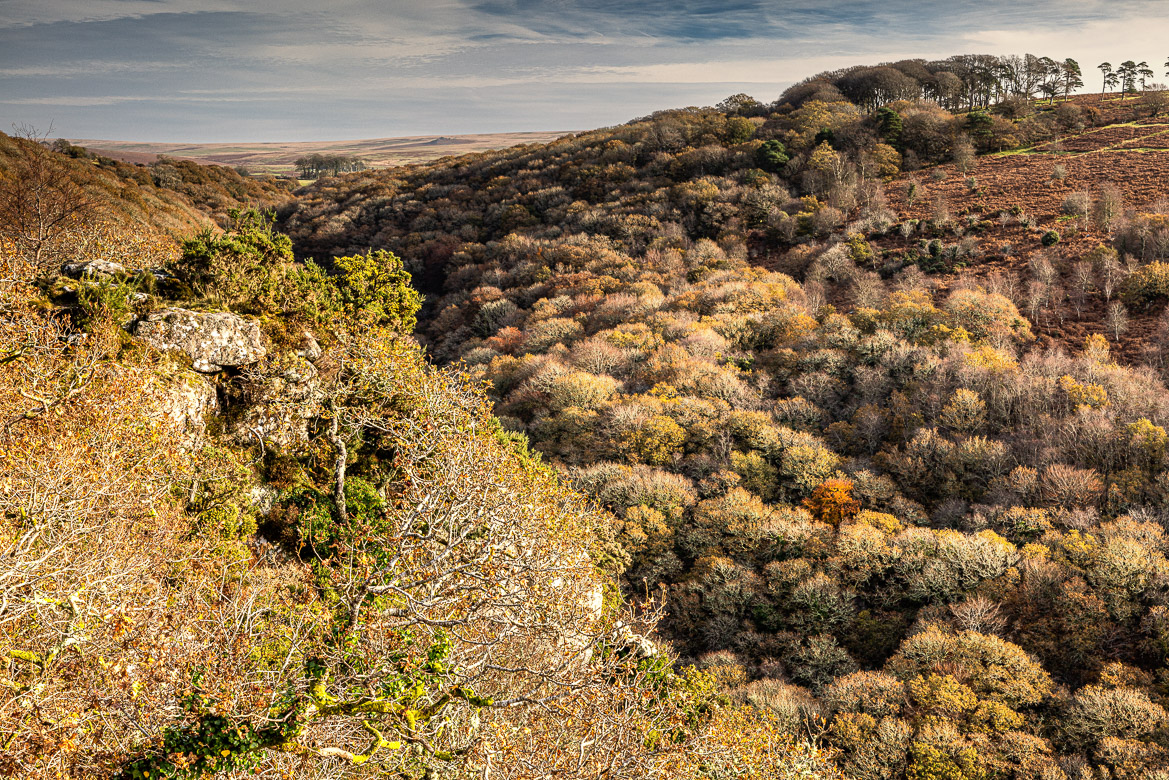
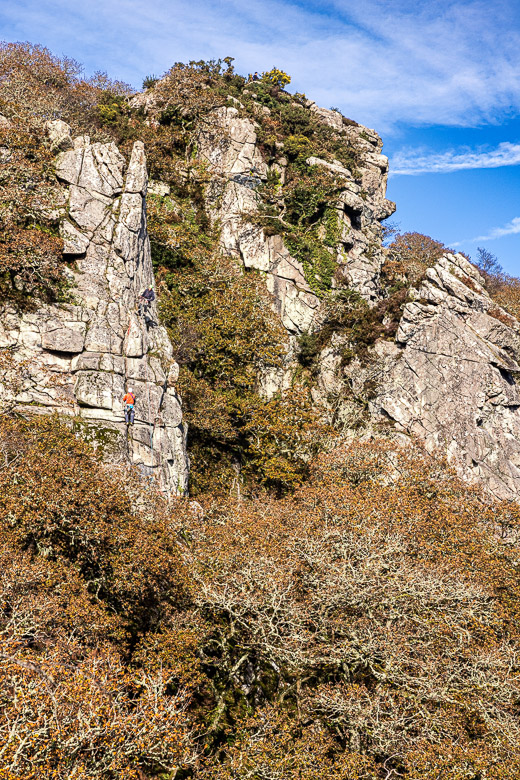
To photograph the climbers above and the picture at the very top of my post I had to climb up myself on a an outcrop. I took a picture with my iPhone to send to my wife looking straight down. I am not standing up like the climbers but sitting on a rock, but you can look straight down alongside my legs and feet and see the canopy of trees 50 metres below (image below to the left)
When I climbed down again I came to another outcrop that – although it was natural – I could easily imagine was used as a defence tower of the neolithic settlement with three sides sloping steep down and the rocks I had climbed down from protecting it on the fourth side. The gnarly trees and fallen leaves covering the ground added to the atmosphere. And all the time I could hear the river rapids thundering below.
Looking down from where I photographed the climbers One of the natural “defence turrets” at Dewerstone
